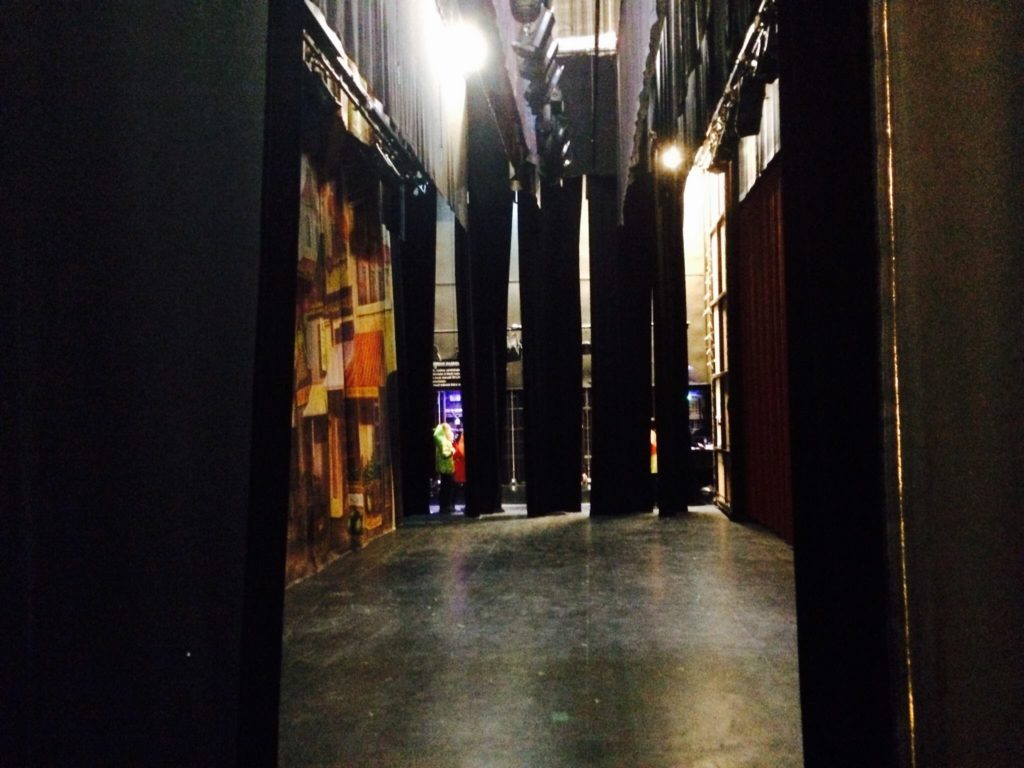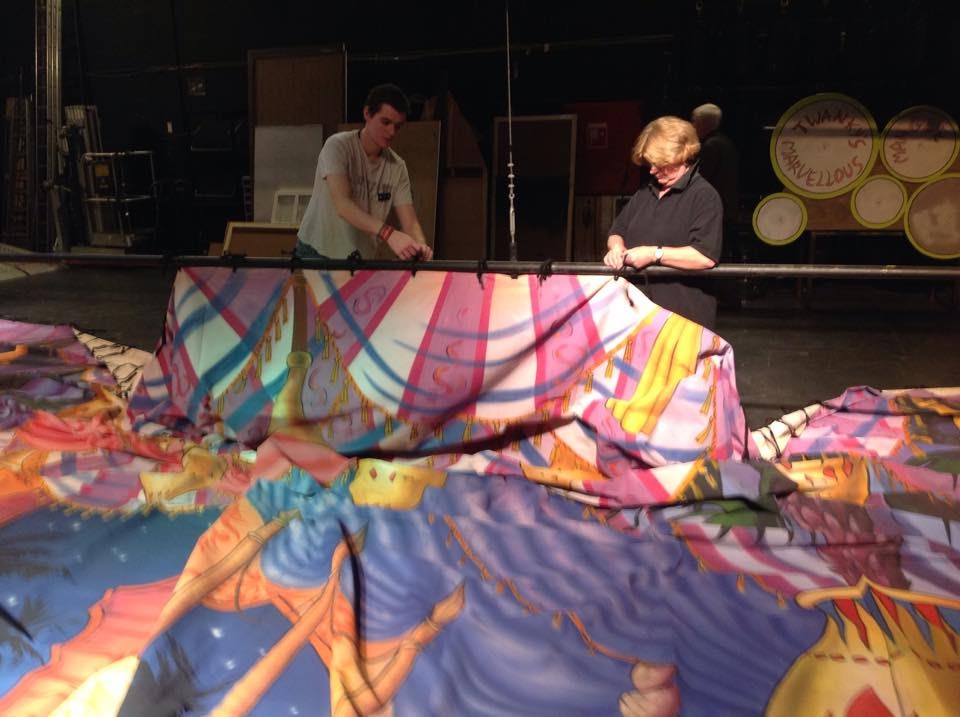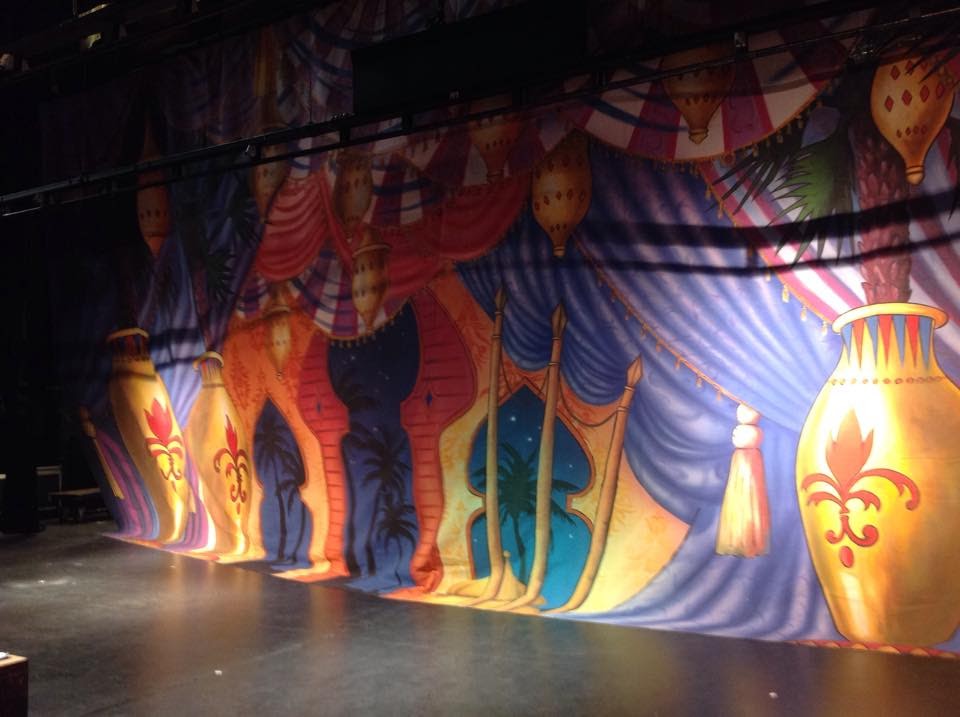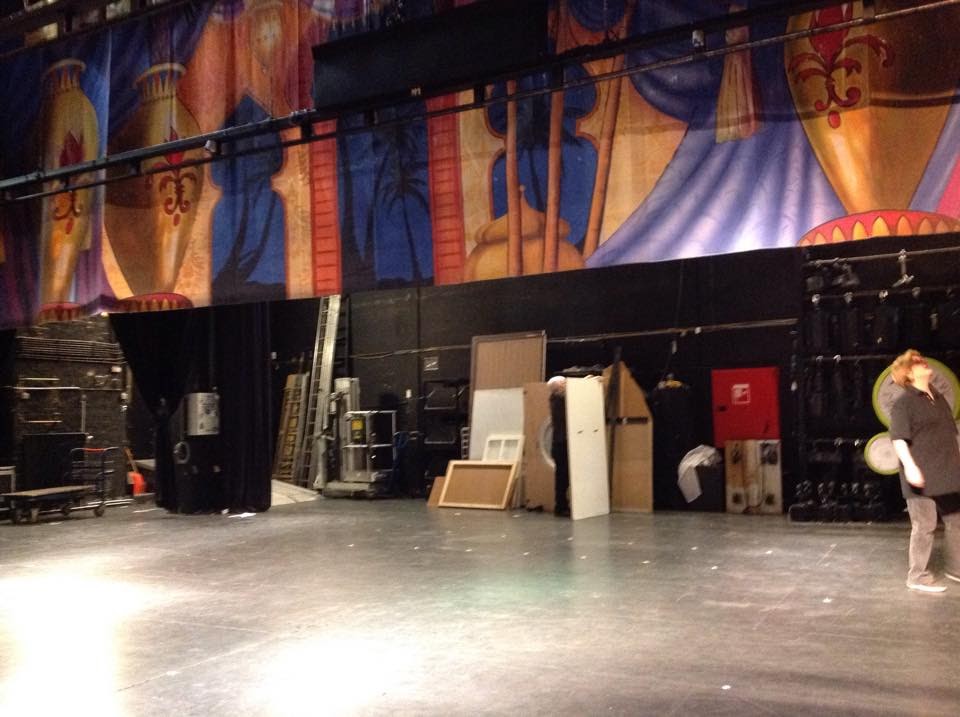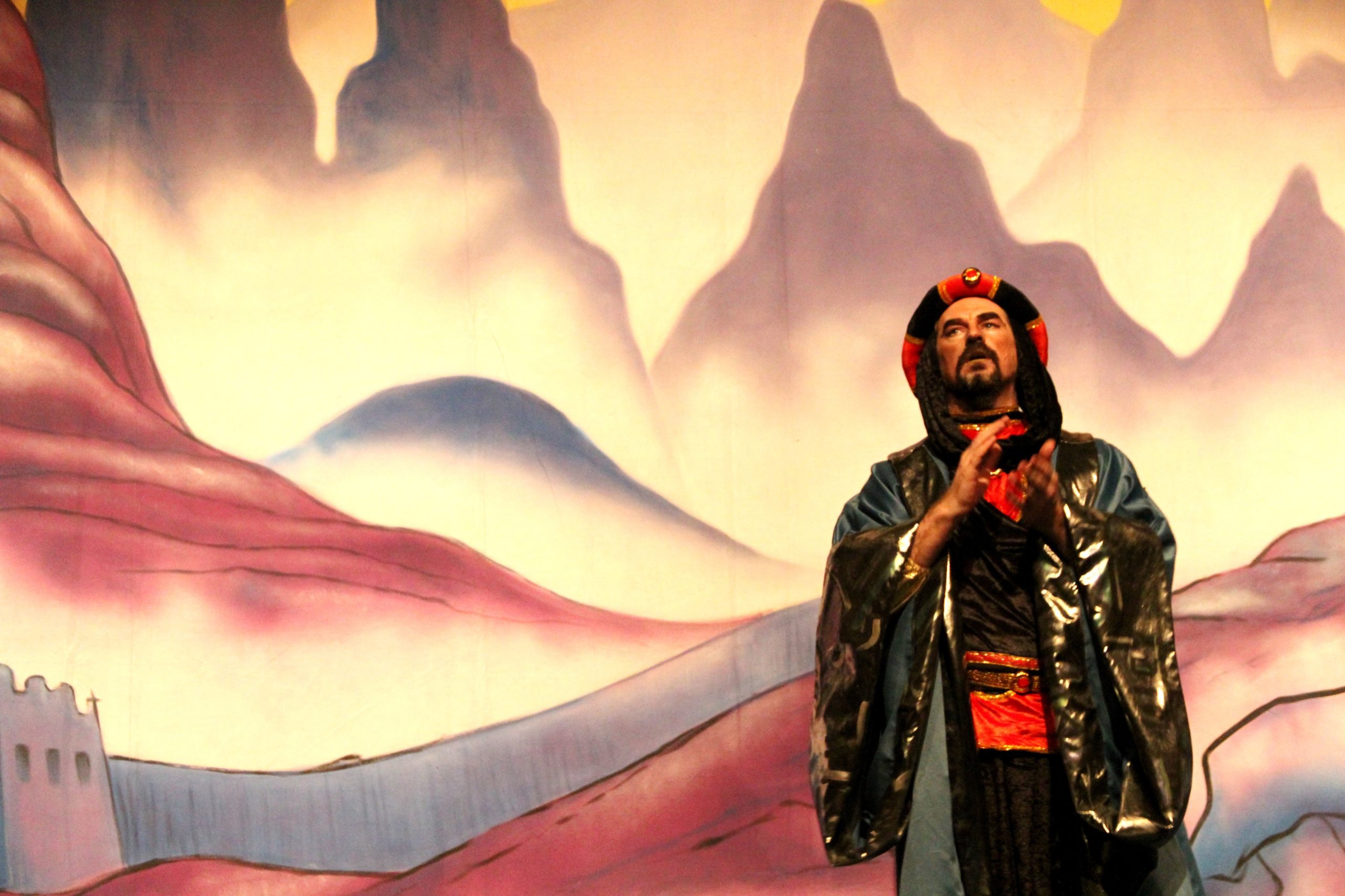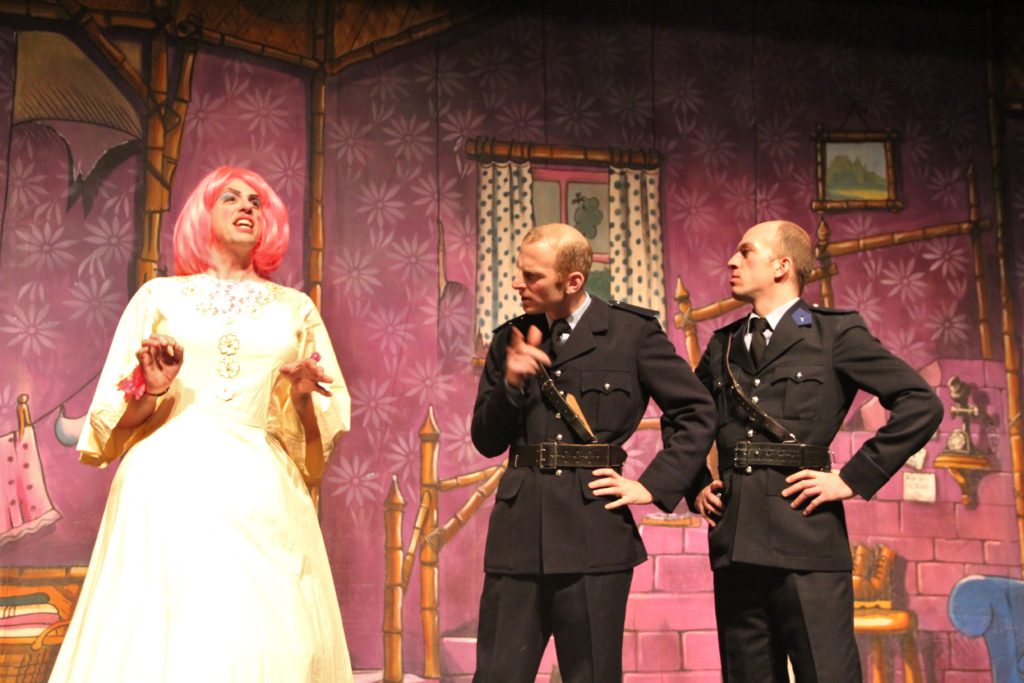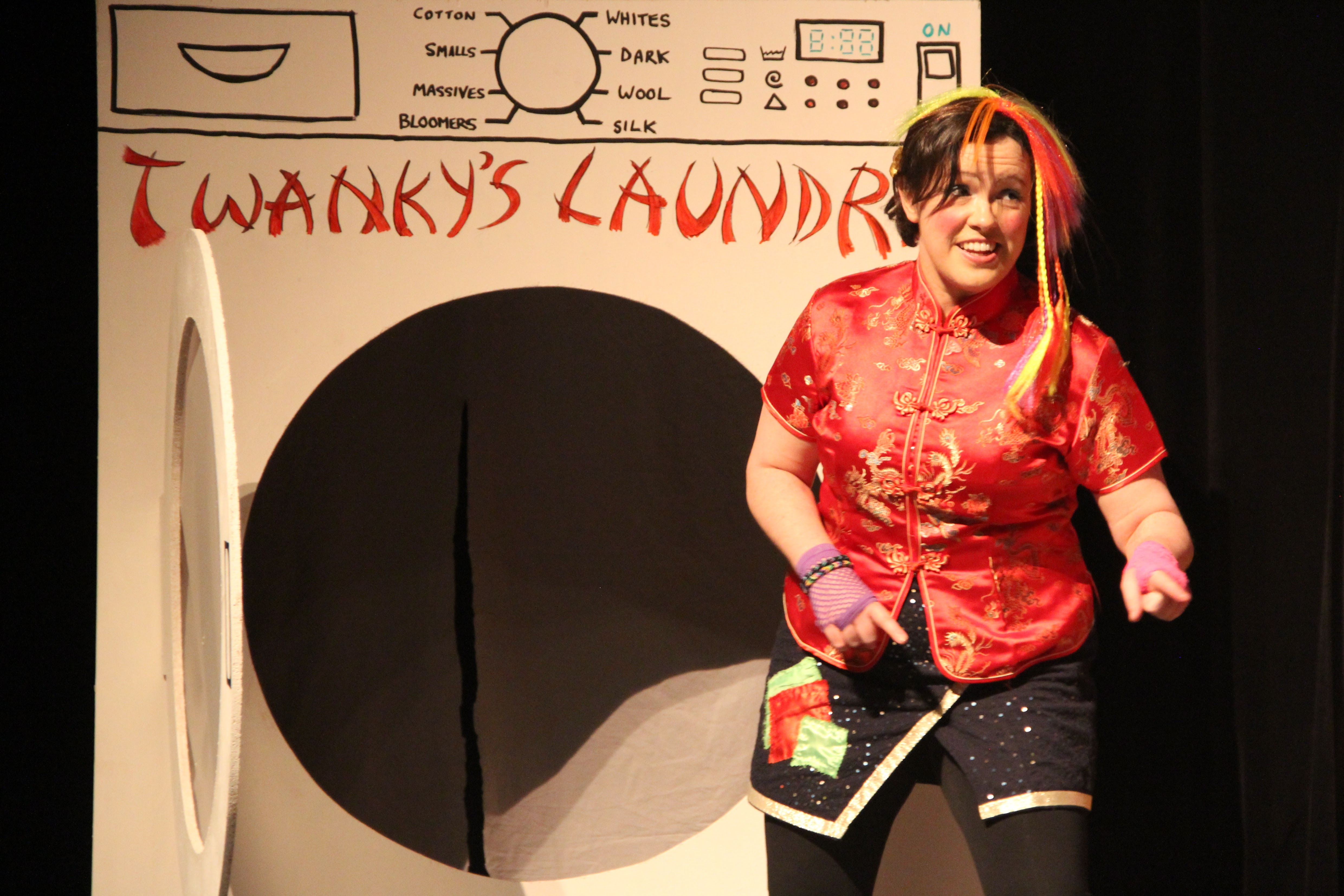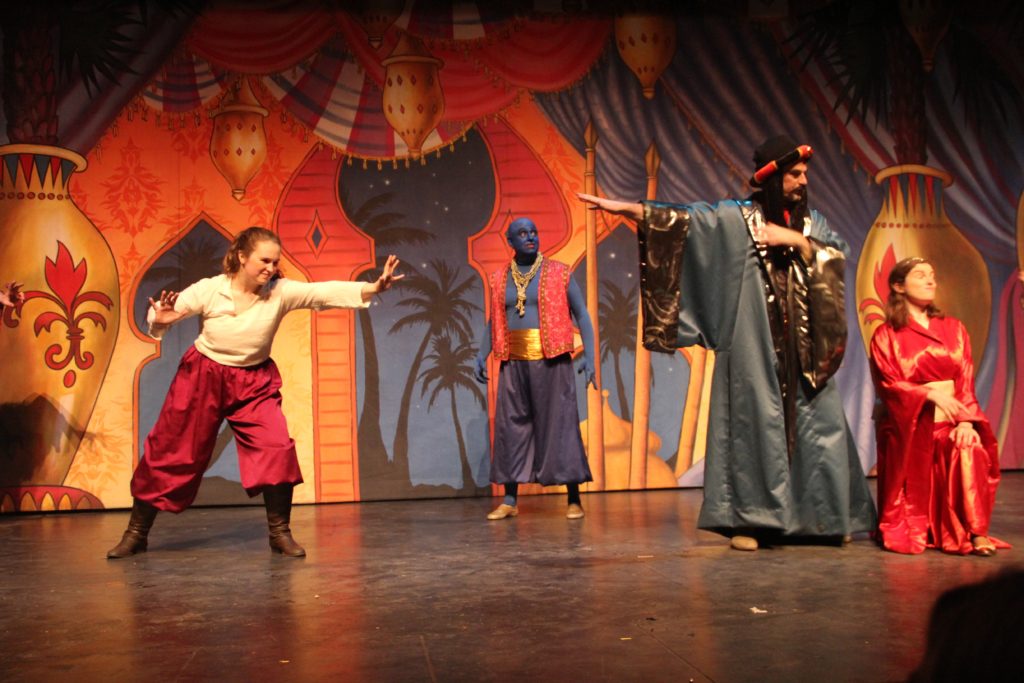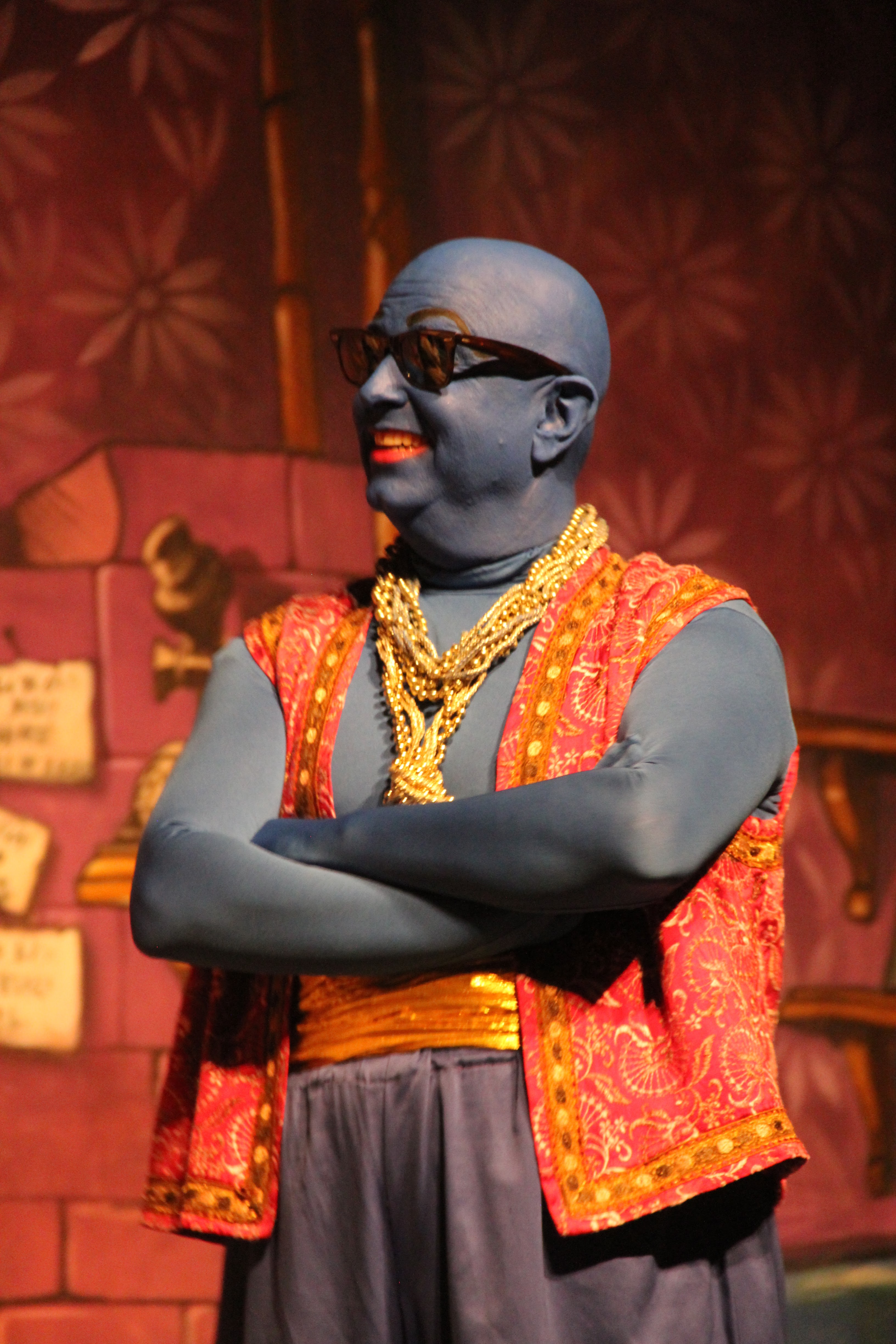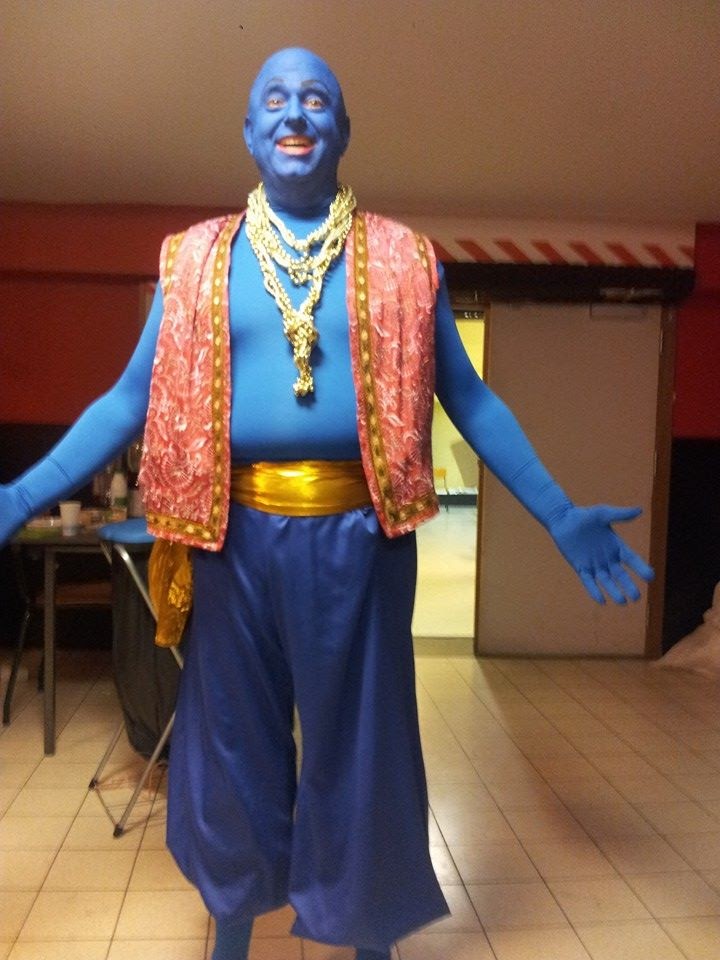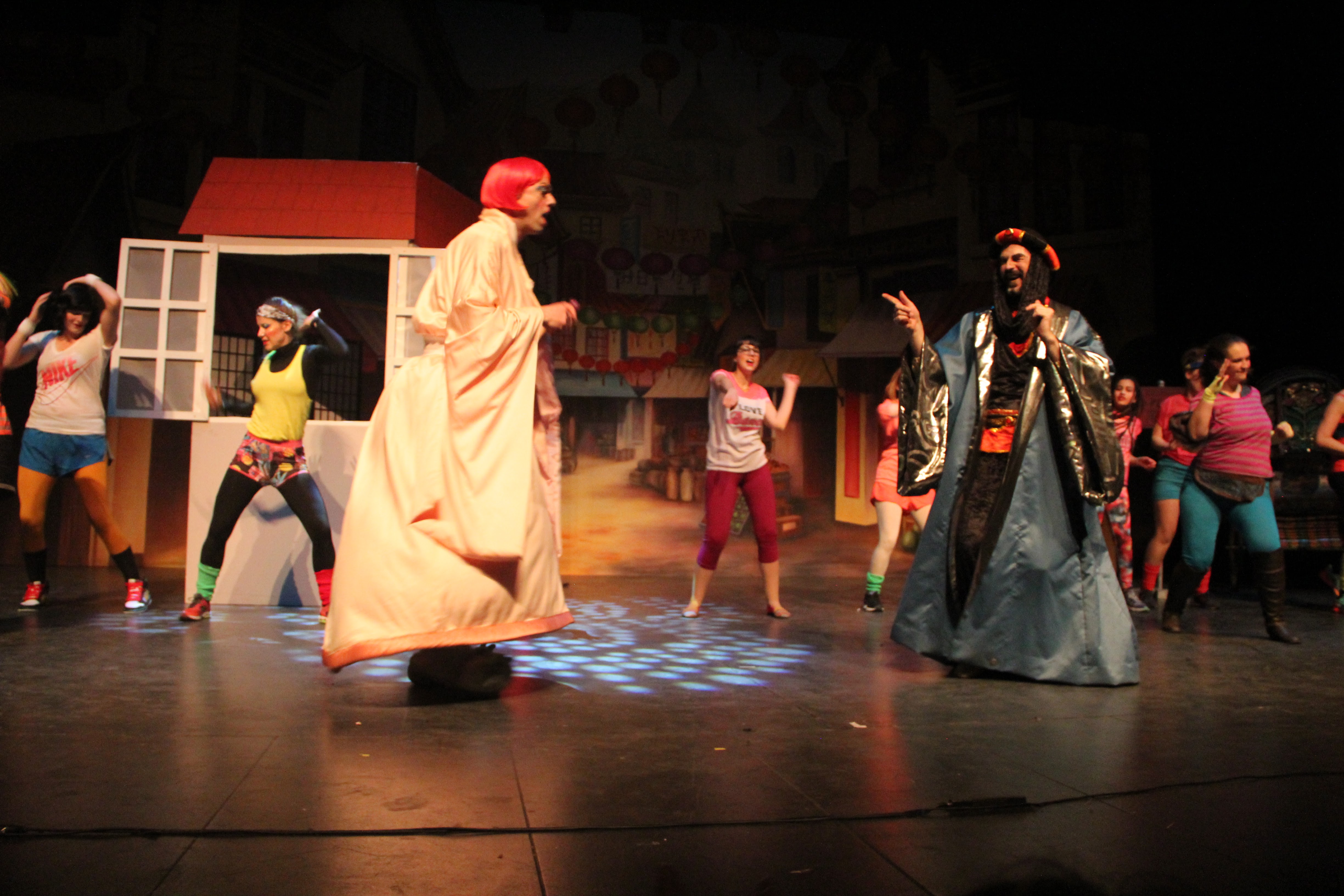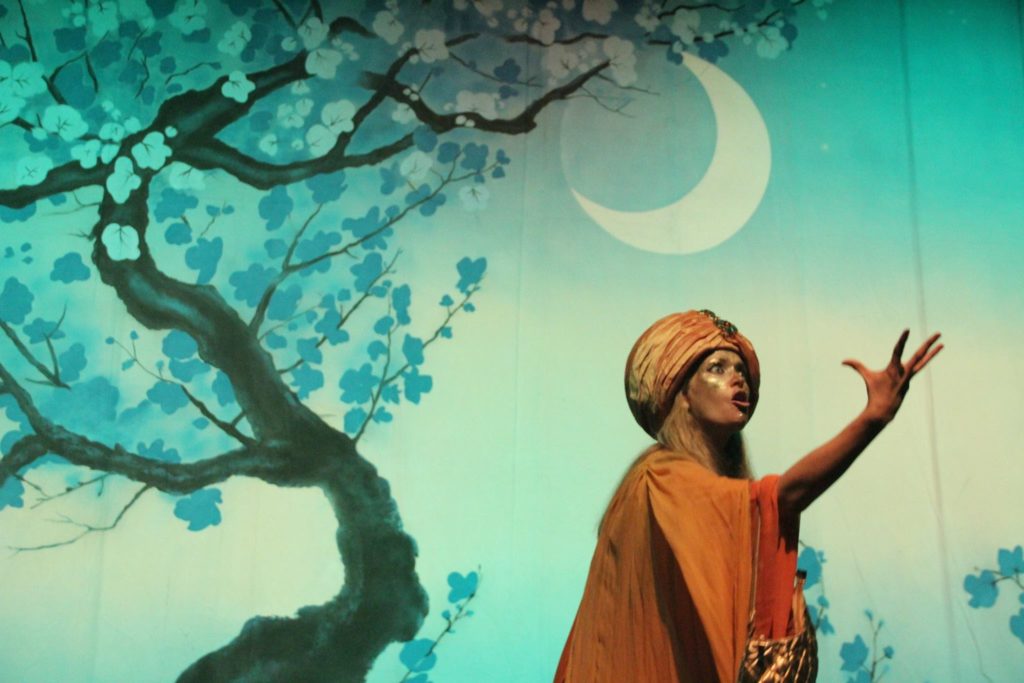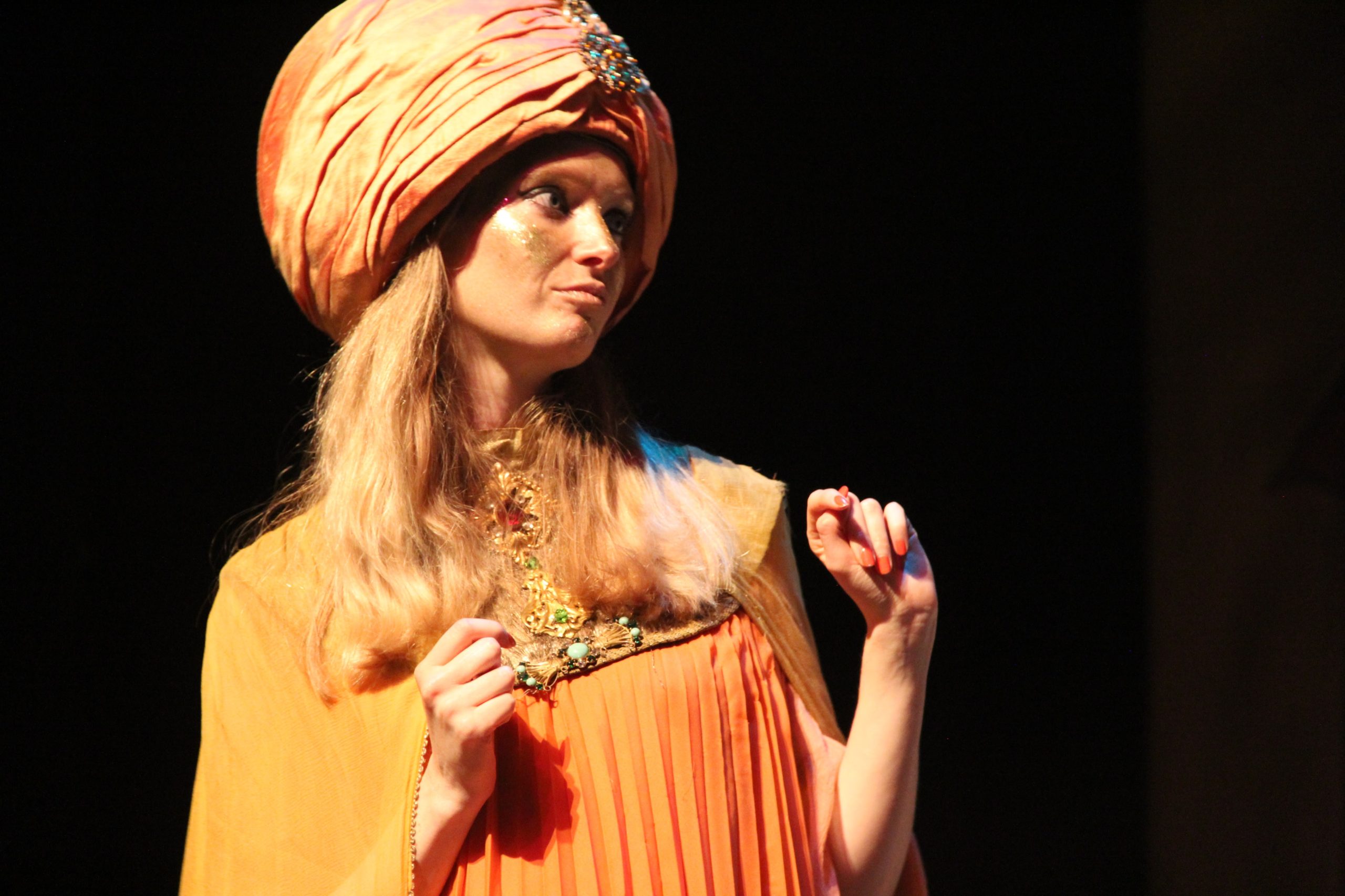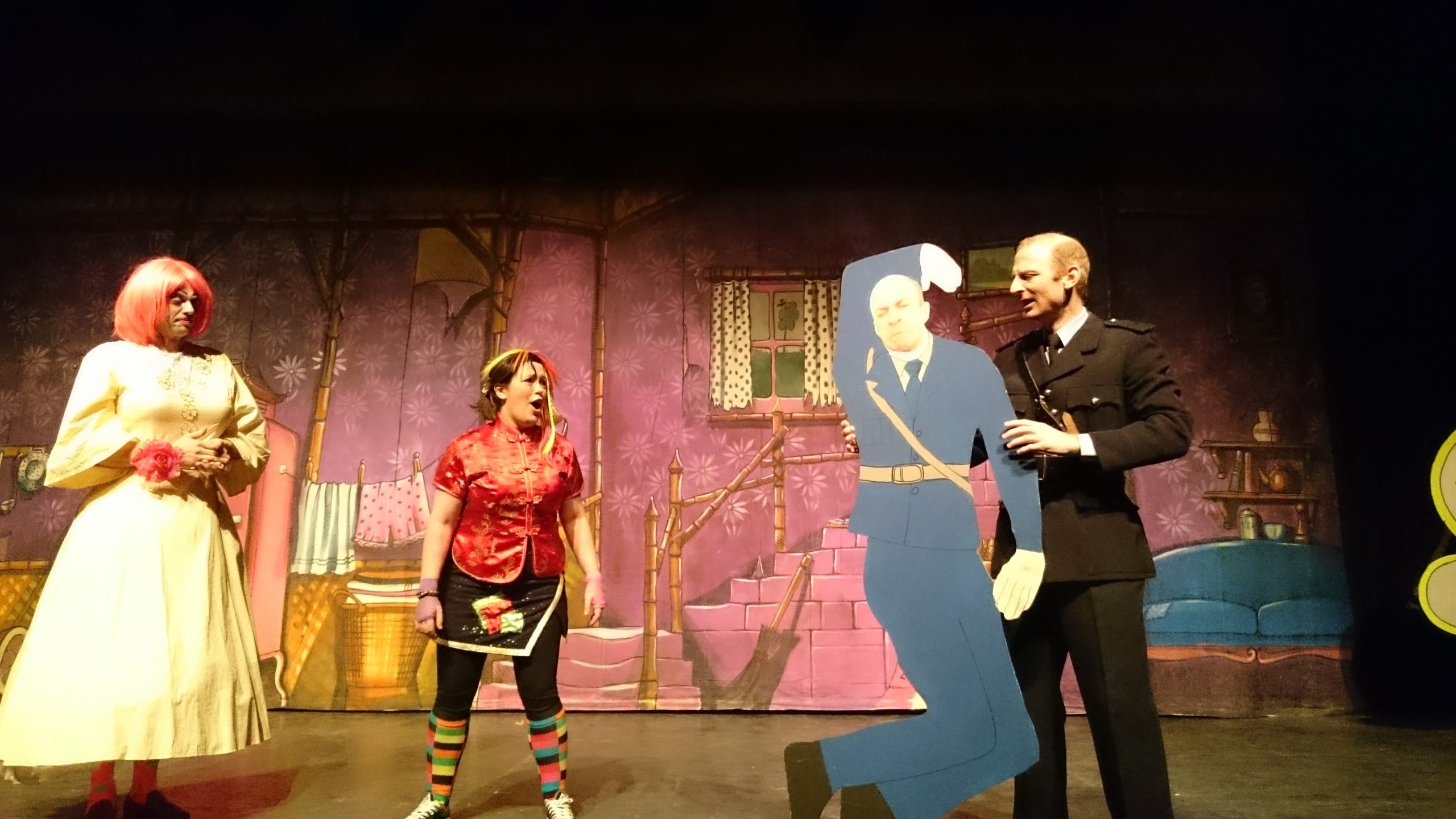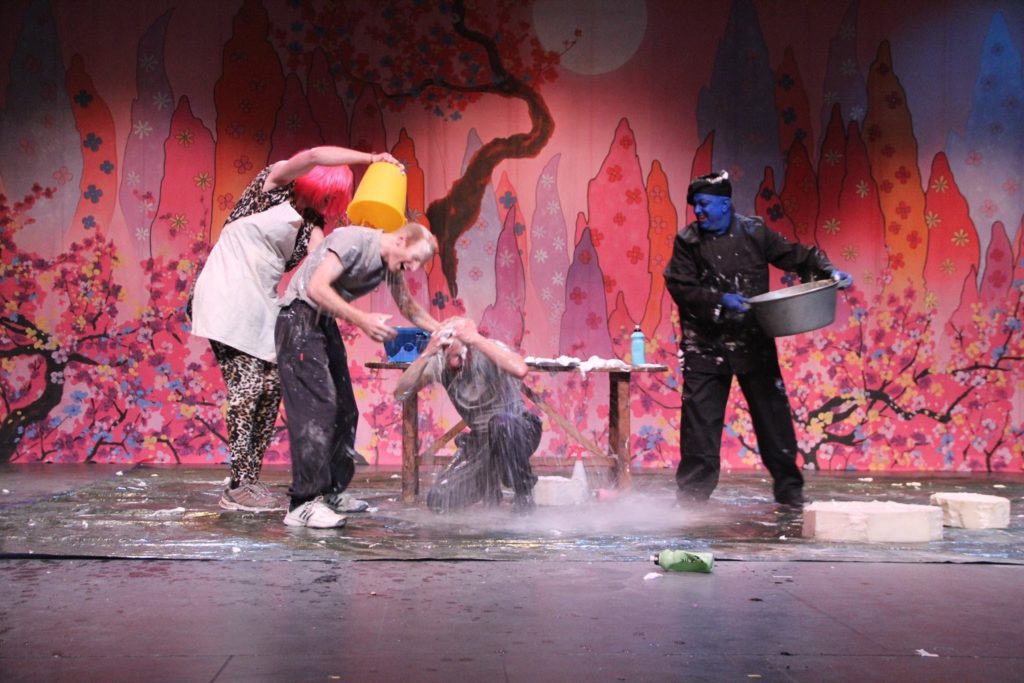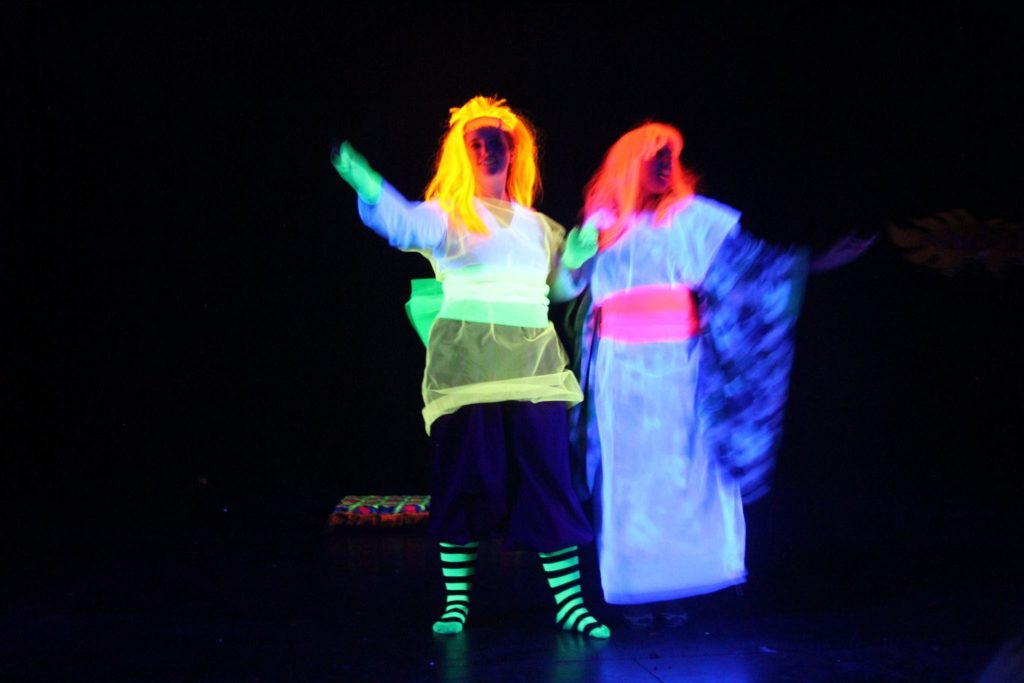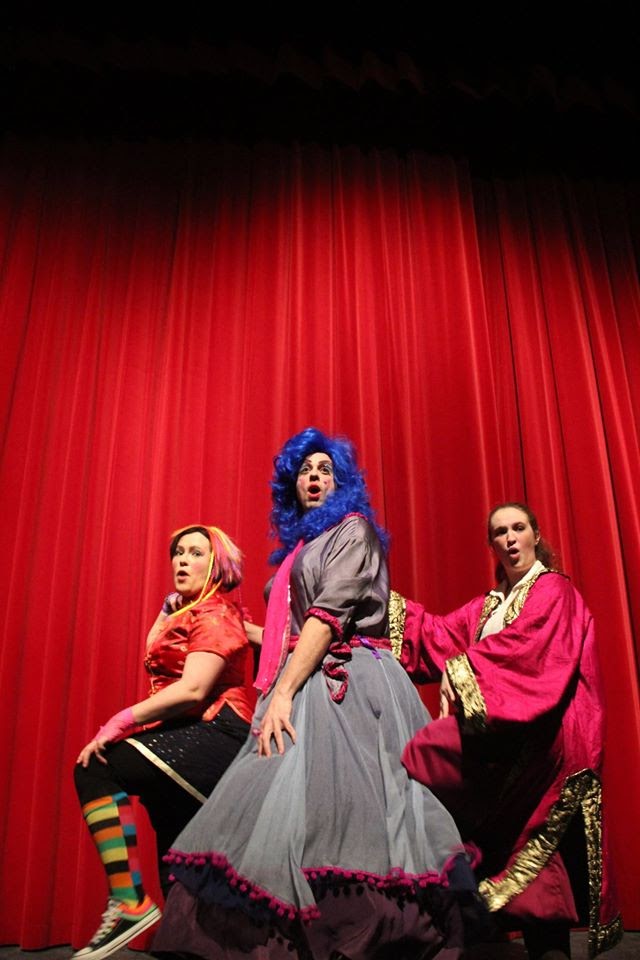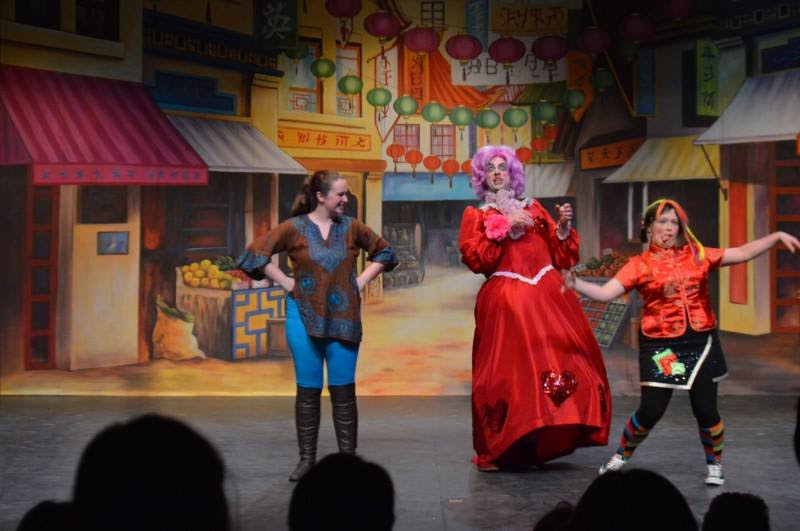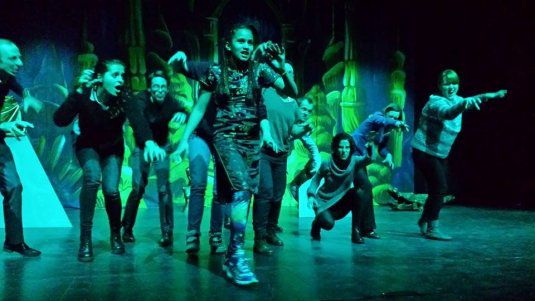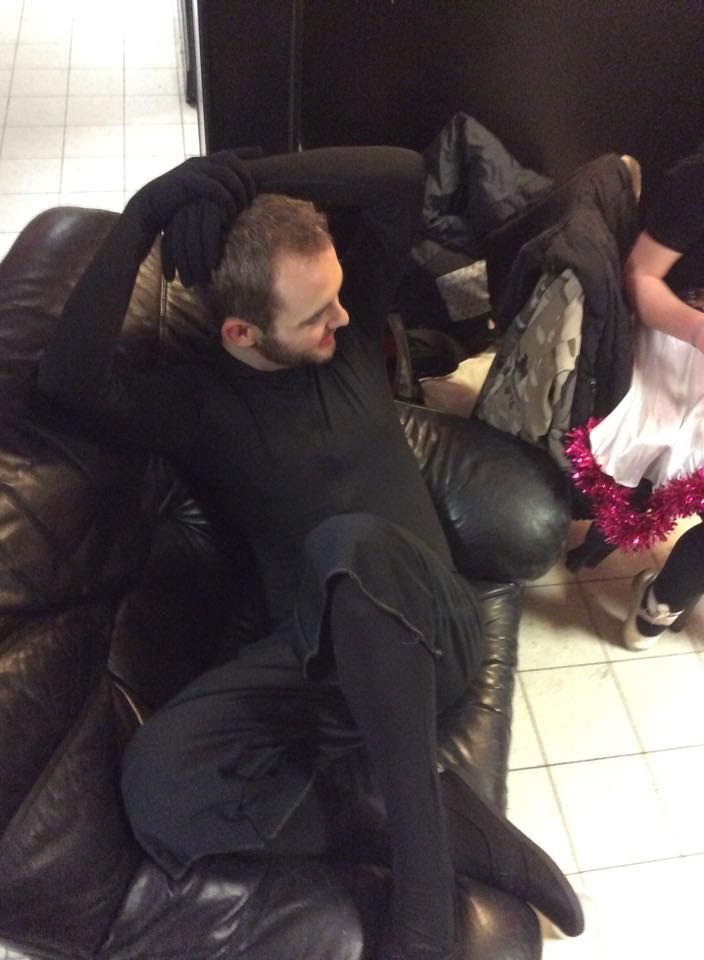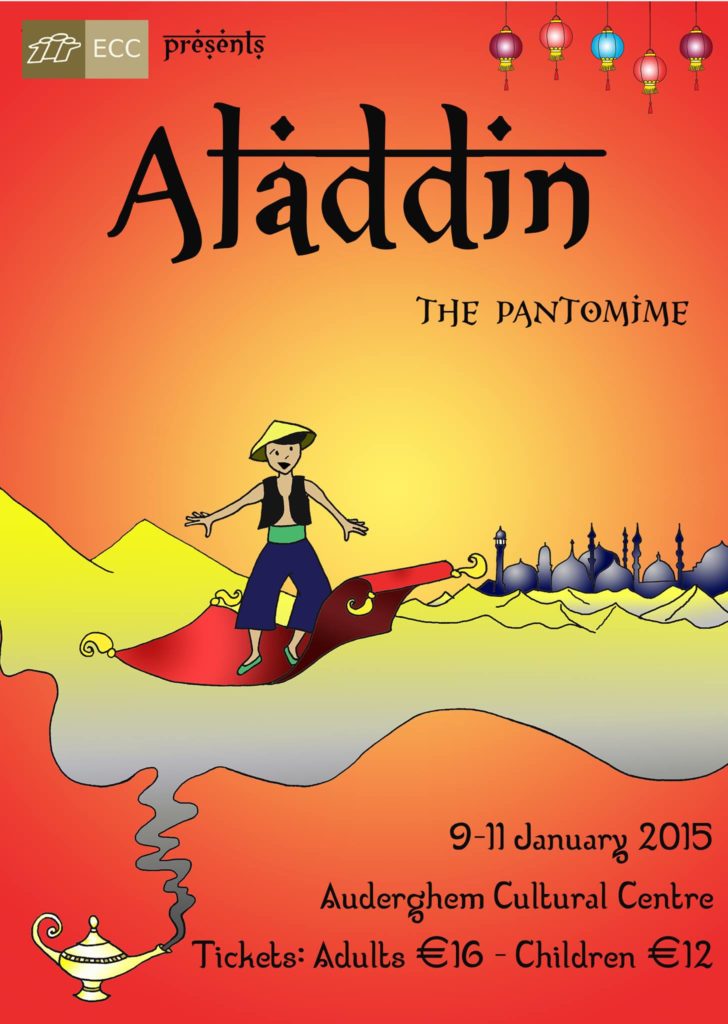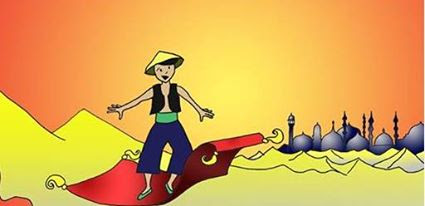An English Comedy Club production.
By Hugo de Chasiron, Femke Beumer, Henri Colens, Lara Gill & Cath Howdle.
Directed By Henri Colens.
Performed 9th to 11th January 2015 at the Auderghem Cultural Centre, Brussels.
The noise in the theatre is tremendous as Cinderella’s Ugly Sisters threaten to rip up her ball ticket. Two hundred children yell “no!” and “you can’t do that!” at the Ugly Sisters. The actors onstage eventually have to resort to actions instead of words to convey what on earth is meant to be happening.
Welcome to the world of pantomime – one of the last remaining truly British art forms. This topsy-turvy world is based on a fairy or folk story, with a girl playing the lead boy, a man in a frock playing “his” mum, and two poor schmucks from chorus playing a tap-dancing neon horse. And it is all regarded as perfectly normal by the British public.
Panto is the annual Christmas trip to the theatre for many children in the UK. From the moment that the good fairy welcomes us, to the enthusiastic clap-along to a cheesy pop song during the final walkdown, it gives us a joyous couple of hours of silliness and colour, with with boo-able baddies, terrible puns and thigh slaps aplenty.
Panto has been with us in recognisable form for over two centuries, arising from a mash-up of Commedia dell’Arte and Music Hall. To see a panto is to peer through a window into theatrical history.
We still laugh at routines invented by comic geniuses like Dan Leno – born 1860, the most famous dame of all time – such as the kitchen scene, where what should be a relatively simple bit of cooking goes horribly and hilariously wrong.
It’s traditional for panto to be written by the company performing it. One of the nicest things about writing panto is choosing which silly bits of comedy business to revive – there are so many to choose from!
Although it’s practically illegal to exclude some routines – like Cochrane & Mankin’s famous “oh no it isn’t!”/”oh yes it is!” dialogue.
The best thing about panto? It’s that the audience drives the action forward.
It’s the boys and girls who tell Aladdin that the cave opens when you shout “Open Sesame!”, who tell Jack’s mum to plant the beans and who tell Sarah the Cook that there’s a ghost behind her. Panto doesn’t just encourage audience participation – the audience becomes the most important part of the show.
So long live panto – it’s easy to see why it has stuck around for so long!
Cath (aka Wishee Washee)
